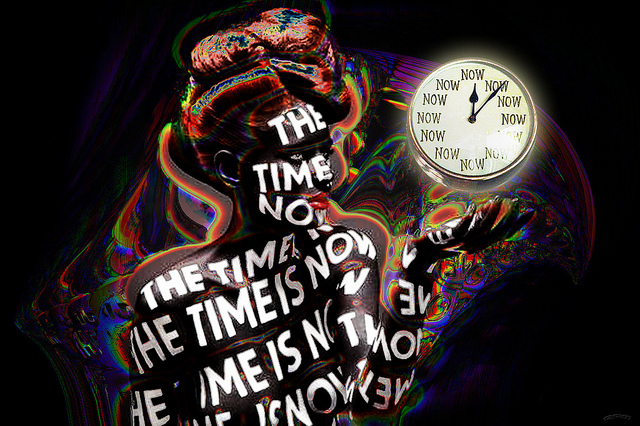Learning your physical self is about having a physical-mental-emotional-spiritual/energetic connection, to create a ‘whole’ self. In this article, grasshopper, you will learn why to train your mind by connecting your body to your mind.
The Mind Training series at [e]Xpositio will teach you how to meditate, from the very beginning. Sequenced in the same order of learning as the one that I went through, you will get access to the practices, habits, thinking, and training, that I’ve been part of over the past 30 years. Wow, that’s a long time; doesn’t feel like that long(!).
Where you have to start is not with your mind at all. It’s because without physical control, you’ll never achieve mind control, emotional control, or even heightened awareness.
The state of your body is related to the state of your mind.
When people first begin to meditate, they sit down, they breathe, they try to relax.
Then, they get itchy. They’ll have an itchy spot on their leg. Then their foot will feel like there’s an ant crawling over it. Then, there will be a pain, and cause them to shift. Then they get annoyed because some dude with a small penis in a noisy car is revving outside, hoping to be noticed. Then there come pins and needles. So they cross and re-cross their legs. Their shoulders feel tight.
Then, somewhere in the middle they think, fuck I forgot to notice my breath. What the fuck does that mean?
Then the itch returns, but somewhere else, and then they start thinking this is really a fucking waste of time.
Right? Been there?
This is a sign that you need to meditate.
The state of your body is deeply related to the state of your mind. If, for example, your mind is a whirlwind and you aren’t sleeping, then you sitting down to meditate will be an experience like the one above. The reason is really very simple: As your mind unwinds, it unwinds into your body. Then, as tension unwinds out of your body, you’ll go into spasms before it disappears.
Most people never really feel the benefits of meditation because they haven’t learned it properly. To gain control over your mind and your emotions, you must become in-sync with your physical self.
Tuning into your body has deep benefits.
If you’ve ever studied yoga, you’ll be familiar with the concept of carrying your emotions in your body; that, as you stretch, you release the pent-up emotion and experience it after your session. It can be absolute ecstasy; it can be the pits of depressive hell and unworthiness; it can resentment.
Being in tune with your body isn’t quite this intense. (Not unless you’re working to unravel it, anyway.) What it means is being aware of what affects your body and your mind, and how your movement, diet, illnesses, tirednesses, stresses, and people and things and environments, affect you. When you are aware of what affects you physically, you are able to do all sorts of crazy things.
Allow me to explain.
A short example from my own life.
My physical reality is quite precise. When I get tired, I get sad. When I get sick, I want cuddles. If I am stressed, tired, sick, hungover, anxious, or (insert malady here), I get worse at sunset. In fact, I start getting worse about an hour before sunset, and this increases until we’re in deep night-time. Therefore, if I have a fever, I will be best in the morning and much worse (or repeatedly worse) at night. If I’m nauseous, same thing. If I’m anxious, I feel amazing in the morning, and horrifyingly antsy around sunset.
This is why, during a period in my life in which I dealt with some grief over a relationship and was living alone – and therefore without any kind of support network – I went walking. I’d hit the footpath as the sun lowered, walk for about an hour an a half, flat out, as the sun set. The activity grounded me, helped me to process the emotions and the thoughts around it, and I didn’t suffer as a result.
Being in tune with my body means that I know almost instantly if I’ve eaten something that my body doesn’t like. Lately, if I eat cheese, I get depressed and revolted almost instantly. If I’ve eaten something that is going to cause problems, I know it just as I put it in my mouth. Being in tune with my body means that I know what foods create what feelings, and how, and where. If I get sick, I can tell any physician about the nature of the illness with overwhelming precision – and how my nutritional and emotional needs have shifted.
Your physical self teaches you about your emotions and mental state.
As you become more adept at knowing yourself, you also learn how and where your emotions arise. Then, how to be with those while inside the physical feeling those emotions create. Then, you learn how to interrogate those emotions and allow them to come from deep inside you, and outwards.
It’s a powerful thing to be able to do, not least because it puts you in the driver’s seat in relation to your own wellness.
Recently, I learned that I had a very deep-seated fear about not hitting my goals, and that this was related to an idea (and a fear) of shame. Unlocking this was all kinds of crazy, because I felt it from the deepest part of my gut. I felt it rise, emerge, overwhelm my physical feeling, and I cried. A lot. I felt like it released a dam that I’d been holding back for a long time. For the next two days I felt unbelievably good, and then I came out in a rash. The two are not independent of each other: As I resolved the emotion and the fear, the rash went away.
And so, this is why we need to learn about our physical selves.
Learning meditation is easier when you start with your body.
When it comes to meditation, you have two choices. You can do it the hard way, or you can do it the easy way.
The easy way is to start with your physical self. The hard way is to sit and meditate.
‘Oh! No, I do it the easy way: With an app,’ you might be thinking. That’s good that it works for you. But, tell me: How well are you able to do this without someone else’s guidance? And if you didn’t have the app to focus on initially, what happens?
That’s right, you go into the cycle above. It’s not fun. In fact, it’s downright discouraging. It’s why most people give up.
Oh, I tried to meditate, but I can’t, they explain matter-of-factly. I don’t have the attention-span, others have said to me, totally unaware that I find it hilarious that they think they can create an attention span (or take drugs for it) and then meditate. It works the other way around, actually. No attention-span? I have a remedy for that. It’s called mind training.
So, start with your physical self. Once you have learned your physical self, and have a meditation-like practice in place for that, you can build on it. It takes time to build the right mental muscles to create the strength you need so that meditation becomes helpful to you.
In the next article in the Mind Training sequence I’m going to give you the first exercise. It’s the first exercise I ever learned on my meditation journey; I learned it when I was about seven years old. It was as a result of that practice that I began to understand how my mind and my physical self is related, and found the ability (and impetus) to extend myself.
To be notified of new posts here, all you have to do is add yourself to the list, below.
[email-subscribers namefield=”YES” desc=”” group=”Public”]

